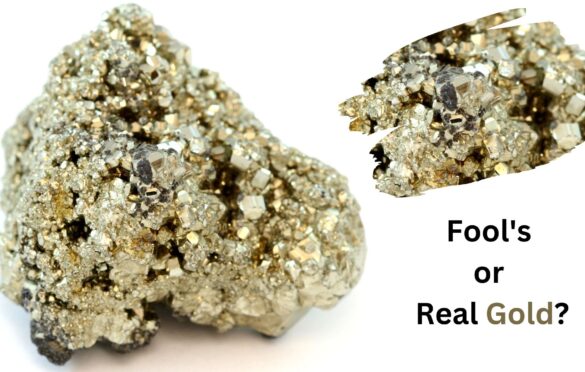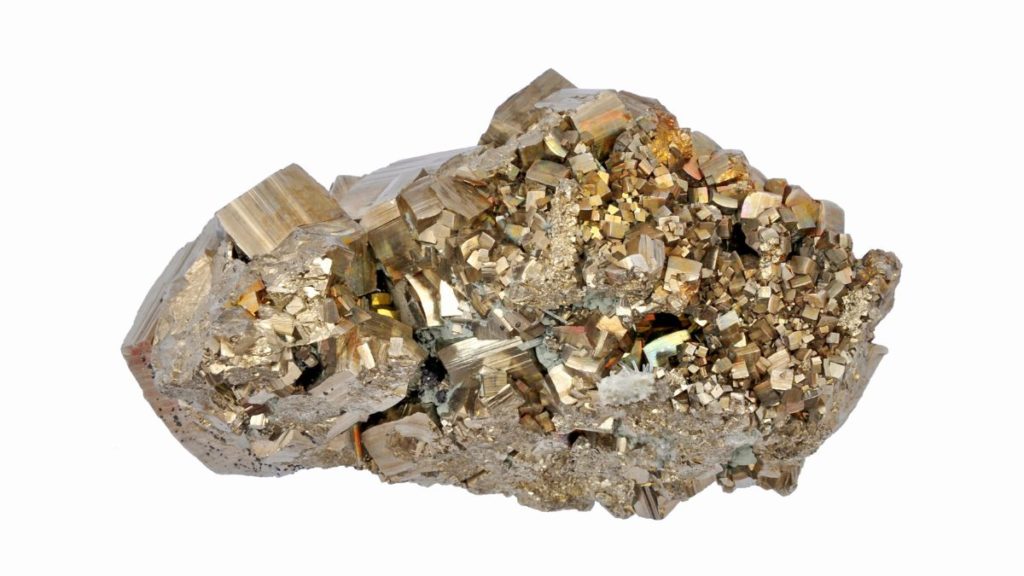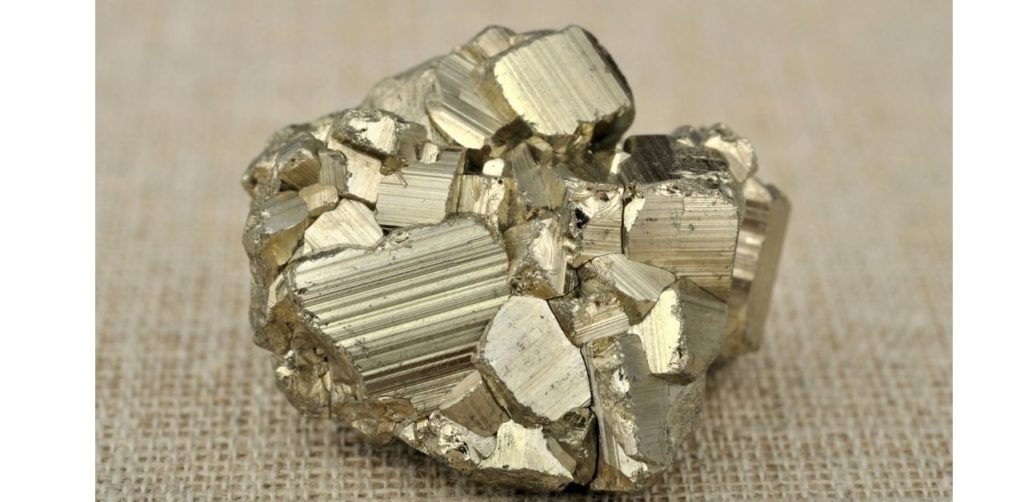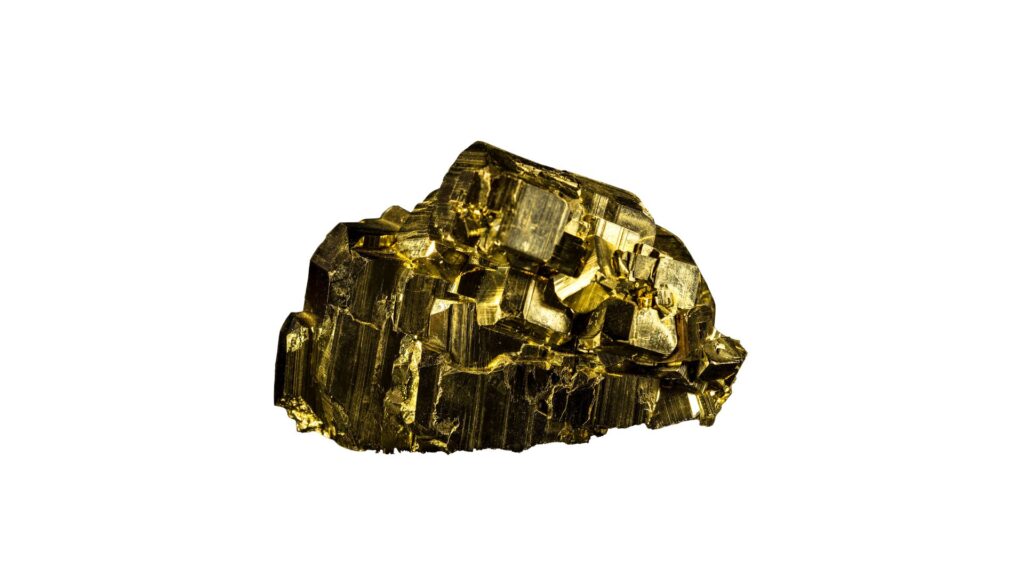What is Fool’s Gold?

Introduction:
Have you ever come across the term “Fool’s Gold” and wondered what it truly is? Well, you’re not alone! Fool’s Gold is a fascinating mineral that has puzzled both geologists and prospectors for centuries. In this comprehensive article, we will delve into the world of pyrite, commonly known as Fool’s Gold, to understand its composition, properties, occurrences, and the reasons behind its misleading moniker.
What is Fool’s Gold?
Fool’s Gold, scientifically known as pyrite, is a mineral composed of iron and sulfur. Its chemical formula is FeS₂, and its lustrous golden appearance often tricks people into thinking it is real gold. The name “Fool’s Gold” stems from its deceptive resemblance to the precious metal, leading many to be disappointed when they discover it’s not the valuable find they had hoped for.

The Composition of Fool’s Gold
Pyrite’s formation can occur through various geological processes. It belongs to the cubic crystal system and often exhibits distinct striations on its crystal faces. Fool’s Gold has a hardness of 6 to 6.5 on the Mohs scale, making it relatively soft compared to genuine gold. While it shares a brassy-yellow color with gold, its metallic luster lacks the richness and depth found in true gold.

The Occurrence of Fool’s Gold
Pyrite is widespread and can be found in various geological settings around the world. It occurs in sedimentary rocks, metamorphic rocks, and hydrothermal veins. Notably, it often forms alongside valuable minerals like gold and copper, further contributing to its confusing allure for prospectors.

The Misconception and Uses of Fool’s Gold
Due to its striking resemblance to gold, Fool’s Gold has historically led to numerous misconceptions and deceptions. In the past, unscrupulous individuals would attempt to pass off pyrite as genuine gold, causing financial losses for unsuspecting buyers. However, Fool’s Gold does have its practical uses. It is a significant source of sulfur and is used in the production of sulfuric acid, an essential compound in various industrial processes.
The Importance of Distinguishing Fool’s Gold from Real Gold
While Fool’s Gold may not possess the same value as genuine gold, it still plays a crucial role in the field of geology. Identifying pyrite is essential for prospectors and geologists, as it can indicate the potential presence of valuable minerals nearby. Understanding the differences between Fool’s Gold and real gold is vital for any aspiring prospector to avoid disappointment and make informed decisions.
How to Differentiate Fool’s Gold from Real Gold
Physical Characteristics: Although Fool’s Gold may have a similar color to real gold, it lacks the soft, yellow glow of pure gold. Its brassy appearance and metallic luster are distinct giveaways upon closer inspection.
Hardness Test: Fool’s Gold is relatively soft compared to genuine gold. Using a simple hardness test, such as scratching it against a ceramic plate, can help differentiate the two minerals based on their scratch resistance.
Conclusion:
Fool’s Gold, or pyrite, may not hold the same allure as real gold, but its unique properties and widespread occurrence make it an essential mineral in the world of geology and industry. Understanding its deceptive nature and learning to differentiate it from genuine gold is crucial for prospectors and mineral enthusiasts alike. So, the next time you come across a glimmering golden mineral, you’ll be equipped with the knowledge to discern whether it’s the captivating Fool’s Gold or the true treasure of gold. Happy prospecting!
Frequently Asked Questions
Q1: Can Fool’s Gold be used in jewelry?
A1: While Fool’s Gold may be used in inexpensive jewelry pieces, its relative softness makes it less durable for everyday wear compared to real gold. It’s important to ensure any jewelry containing pyrite is properly cared for to avoid damage.
Q2: Are there any health risks associated with Fool’s Gold?
A2: In its natural form, Fool’s Gold is generally not harmful. However, like many minerals, pyrite can form dust, which, when inhaled in large quantities, may cause respiratory issues. As a precaution, it’s best to handle pyrite with care and avoid creating dust during processing.
Q3: Can Fool’s Gold be valuable in its own right?
A3: While Fool’s Gold is not as valuable as gold, it does have industrial uses, particularly in the production of sulfuric acid. Additionally, some collectors and enthusiasts value unique and well-formed pyrite crystals for their aesthetic appeal.
